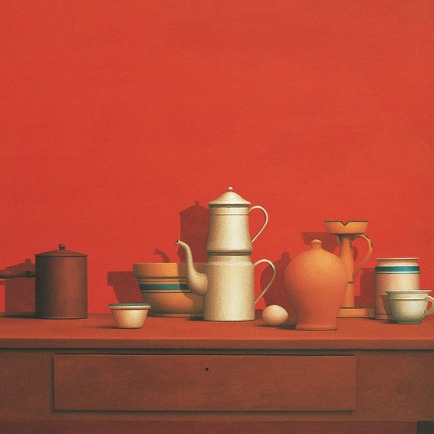



Exhibition at Tsinghua University pays tribute to collector patrons whose donations helped many view great works, Lin Qi reports.
A general goal of art collectors is to have their assemblies shown to as many people as possible, so that the value of art in human creativity can both be appreciated and passed down generations.
Late German collector Peter Ludwig once said that the "incomparable brilliance" of artists is demonstrated when their artworks appear before people over and over again, which attests to the "eternal humanity "inherent in the styles of times. "Man lives and loves, playing his role and presents himself. He dreams, despairs, as well as hopes. He fights and perseveres."
In November 1996, an exhibition opened at the National Art Museum of China, in Beijing, showing a collection of Western artworks donated by Ludwig and his wife, Irene, earlier that year. Ludwig died four months before the show's launch. Since then, the Ludwig collection — comprising some 89 pieces of modern and contemporary art — has been shown in rotation at the NAMOC, and has also traveled to other cities across the country.
Through the exhibition, many people in China have seen works by celebrated figures of Western art whom they heard little or had known only by reading books or magazines, such as Pablo Picasso, Andy Warhol, Roy Lichtenstein and David Hockney, among others.
Now, selected works from this collection are on display at an exhibition, titled Timeless Warmth, at Tsinghua University Art Museum, through Nov 30.
Wu Weishan, director of the NAMOC, says through their lives, Peter and Irene Ludwig were committed to collecting art and carrying on research, by which the couple explored the rules of the world and understood humans. Their assembly presents an expansive view of Western art in a long timespan that can be regarded "an undertaking of magnificence", he says.
"And they shared what they learned from art by donating or lending works to museums for display. Because of their insight and openness, part of their former collection has been at the National Art Museum of China for 26 years," Wu says.
He says to further carry on the Ludwig's spirit of sharing, the NAMOC has so far presented the collection at 14 culture venues in 11 cities nationwide, receiving more than a million visitors and bridging cultures.

The ongoing exhibition at the TAM, coinciding with the 50th anniversary of Sino-German diplomatic relations, shows more than 60 works in six categories, unfolding the art scenes in Europe and North America between the 1960s and '90s.
It is also being held under a cooperation agreement signed in December 2020 between the NAMOC and Tsinghua University to boost academic exchanges between the two countries and deepen public interest in art.
The exhibition begins with a 1.5-meterhigh painting, Foot Soldier with a Bird, by Picasso. The Spanish master depicted an aging infantryman and a white dove resting on his sword handle and drinking from a bowl of water he is holding. Picasso revisited the theme of infantry in the later stage of his life, an embodiment of his fighting spirit. In the painting, which Picasso made a year before his death, the soldier looks sorrowful and has wrinkles under his eyes, accentuating the atmosphere of sadness.
There are four Picasso works from the Ludwig collection: three oil paintings, including Foot Soldier with a Bird, and one ink work, titled Figures. They have been shown often to attest to people's interest in not only Picasso's distinctive painting style, his influence on culture and the staggering prices of his works at auctions; but also, they remind people in China of a meeting between him and Chinese artist Zhang Daqian in Nice, France, in 1956, viewed as a summit between two masters of Western and Eastern art.
Figures on display was painted on a piece of folded paper with Chinese-style painting brushes. The drawing once decorated Irene Ludwig's bedroom and she cried when parting with it, according to Yang Lizhou, who was a deputy director of the NAMOC in the mid-1990s and corresponded a lot with the couple.
Yang recalls that Peter Ludwig comforted his wife by saying that Picasso would "feel happy in the other world knowing his work was being transported to China, the birthplace of the tools he used to create the painting".
The Ludwig collection encompasses significant trends in art through which one gets to know about the changes in society several decades ago, and the themes and issues being addressed still create a resonance in the audience today. For example, works from the 1960s and '70s show the emergence of consumption culture and people's reflections on overindulgence.



If you have any problems with this article, please contact us at app@chinadaily.com.cn and we'll immediately get back to you.